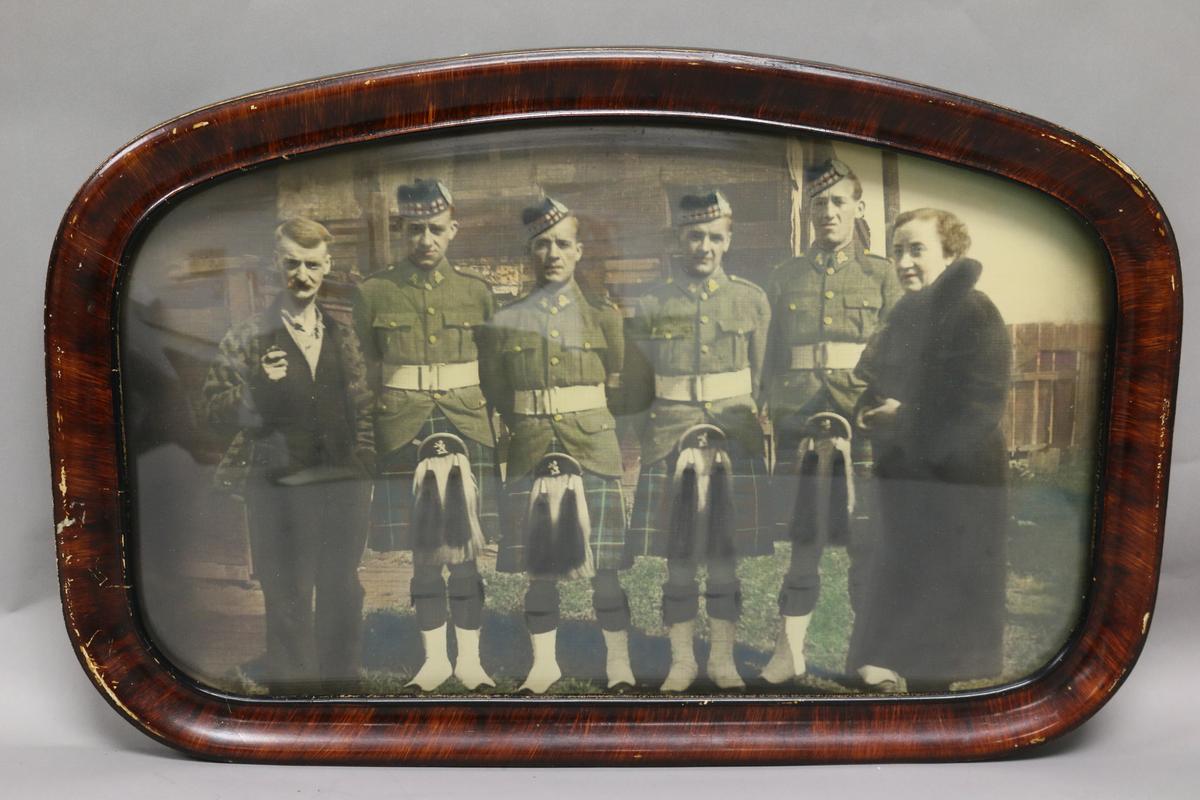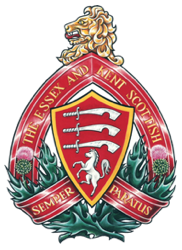Families at War

A photo of the Murphy Family taken in 1940. Left to right: John Murphy (d. approx. April 1942), Cpl William (Willy) Murphy POW, Pte Robert “Bob” Davidson Murphy KIA, Pte James Murphy POW, Pte Joseph William Davidson Murphy POW, Elizabeth Murphy. Donated by Brian and Elizabeth Murphy on 11 November 2019.
Due to the close-knit nature of local communities to Canadian military regiments, it was common for friends and family members to enlist together in times of crisis. This is particularly true of the Second World War, when the Essex Scottish Regiment had young men from several families sign up together. Going overseas with one’s family would have been a comfort during what was otherwise an extremely tumultuous and potentially terrifying venture. An example of one battle where several families served together was the Dieppe Raid on 19 August 1942.
One of these families was the Rivait family. Four of the Rivait brothers enlisted with the Essex Scottish Regiment between 1940 and 1941. Privates (Pte) Leon, Raymond, Alphonse, and Lawrence Rivait did basic training in Canada before going overseas and once in England, they continued their training. Pte. Leon, Raymond, and Alphonse all fought at the Dieppe Raid on 19 August 1942. In this engagement, Leon and Alphonse were killed in action. Leon is buried in the Dieppe Canadian War Cemetery. Alphonse was officially missing in action so his burial site is unknown although his sacrifice is commemorated at a 1939-1945 Memorial at Brookwood Military Cemetery in Surrey, England. Pte. Raymond Rivait was wounded and taken as a prisoner of war at Dieppe. He was transported to Stalag VIII B in Poland, where he spent the rest of the war until he was released on 30 May 1945. On 23 November 1944, A/Sgt Lawrence Rivait was killed in action and is buried at Groesbeek Cemetery in the Netherlands. Their younger brother, Edgar, enlisted after Lawrence’s death. His parents protested his enlistment; he was discharged but eventually reenlisted. Sadly, the youngest brother, Pte. Edgar was killed in action on 23 November 1944.
Another family who enlisted together was the Murphy family. The four Murphy boys joined the Essex Scottish Regiment by 1940. Corporal William Murphy and brothers, Ptes. Robert “Bob”, James, and Joseph Murphy, all participated in the Dieppe Raid. Pte. Robert Murphy was killed in action at the battle, while the other three brothers were taken as prisoners of war.
Ptes. Eugene, James, and Roy Cousineau also fought at Dieppe with the Essex Scottish Regiment. Pte. Eugene Cousineau was wounded at the battle, but all three brothers were among the few who returned to England safely. Eugene was with A Company and while at behind the seawall on “Red Beach” he “gave the Germans plenty to worry about.” In an interview with Ross Munro, Eugene stated that he was responsible for cutting through barbed wire so that the other men getting off the landing craft could proceed up the beach. He was the fourth man off the boat. Eugene and the rest of A Company were pinned against the seawall for hours until the call to withdraw was given, after which he was one of the last to successfully leave the beach. Cousineau stated that bullets grazed his clothes but did not hit him. He praised the men from the Scottish for “fighting like the devil” while under German fire, saying that no member of the regiment was not “fighting like mad.” Munro stated that Cousineau had “all the courage in the world,” and his pride in being a part of the Essex Scottish was evident. Cousineau was Mentioned in Despatches for his role at Dieppe.
Brothers Eugene and William Doe both enlisted with the Scottish in December 1939. Acting Lance Corporal Eugene Doe had been a student at Kennedy Collegiate before leaving school to enlist. He did basic training in Windsor and at Camp Borden before being sent to England with the first wave of men to go overseas. He served with D Company at Dieppe before being counted as missing in action. His brother, Private William Doe was with Headquarters Company. He had been offered a contract with Major League Baseball’s Cleveland Indians before the onset of war. He gave up this contract to enlist with the regiment. William was also listed as missing after the engagement at Dieppe. A third Doe brother, Fred, enlisted with the Royal Canadian Engineers in 1941.
The Knight brothers, Donald and Harold, were also at the raid on Dieppe in 1942. Both brothers were taken as prisoners of war and were held at Stalag VIII B.
The Dieppe Raid in 1942 was devastating for the Windsor-Essex area due to the ties between members of the regiment, both through blood families and bonds of comradery. The raid tore local families apart. If brothers were lucky enough to survive the raid but were taken prisoner, their families worried over their health and well-being for months, if not years. The familial connections in this battle alone are representative of the toll that years of war had on the community and others like it across the country as men enlisted and were sent overseas to the front.
Story by Nicole Pillon, Canada Summer Jobs 2022 participant
with The Essex and Kent Scottish Regiment Association
Sources
- The Essex and Kent Scottish Regiment Association artifact collection - Cousineau donation
- The Essex and Kent Scottish Regiment Association artifact collection - Bell telephone book scrapbook 1942-43
- Photo of Harold and Donald Knight
- Correspondence with Rivait Family 2022
